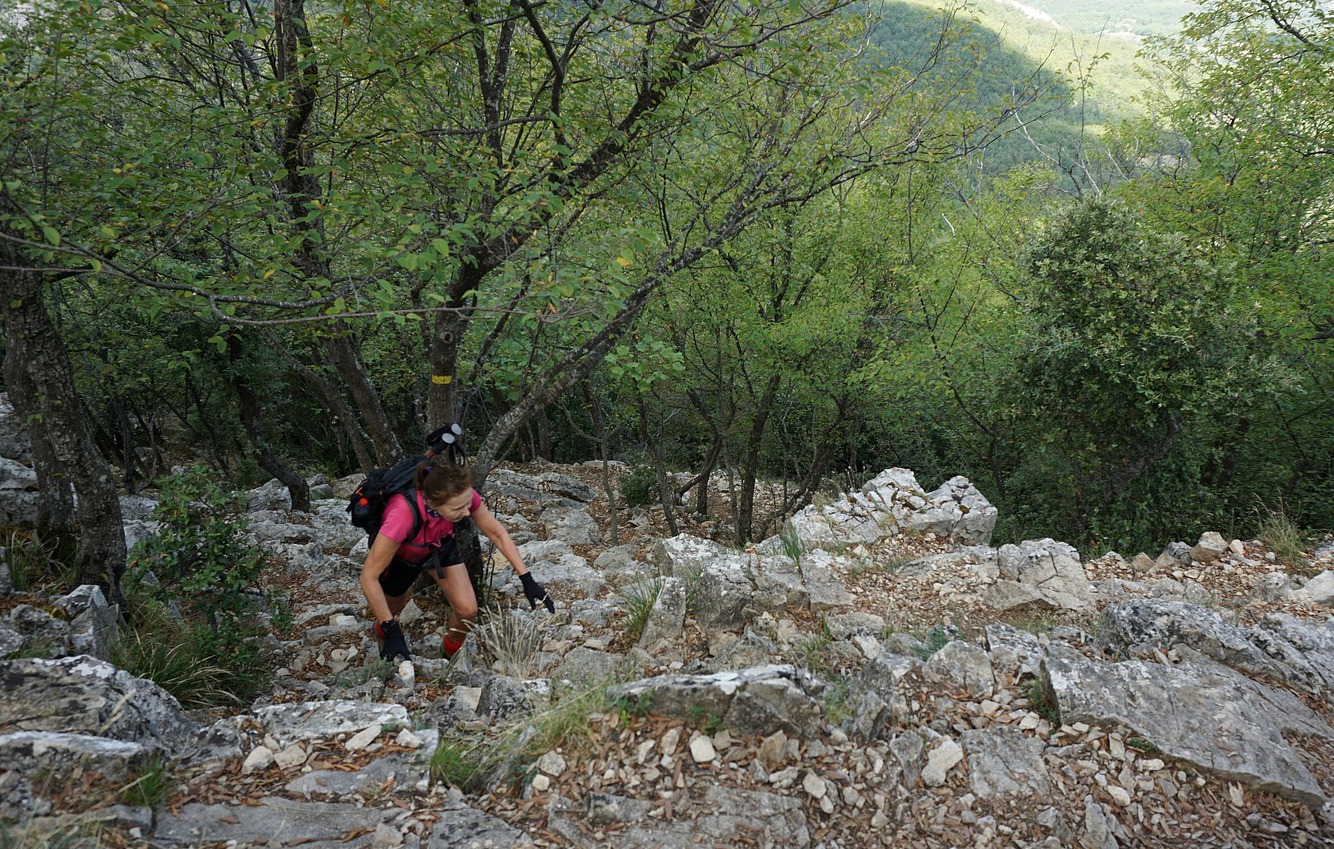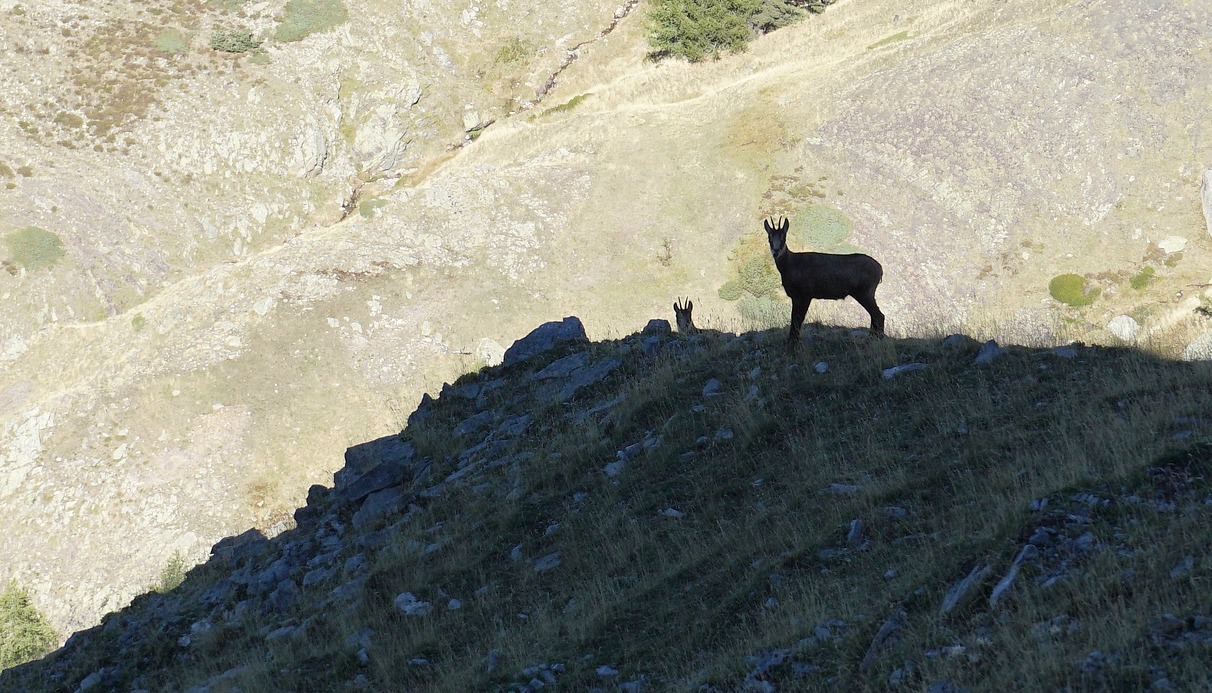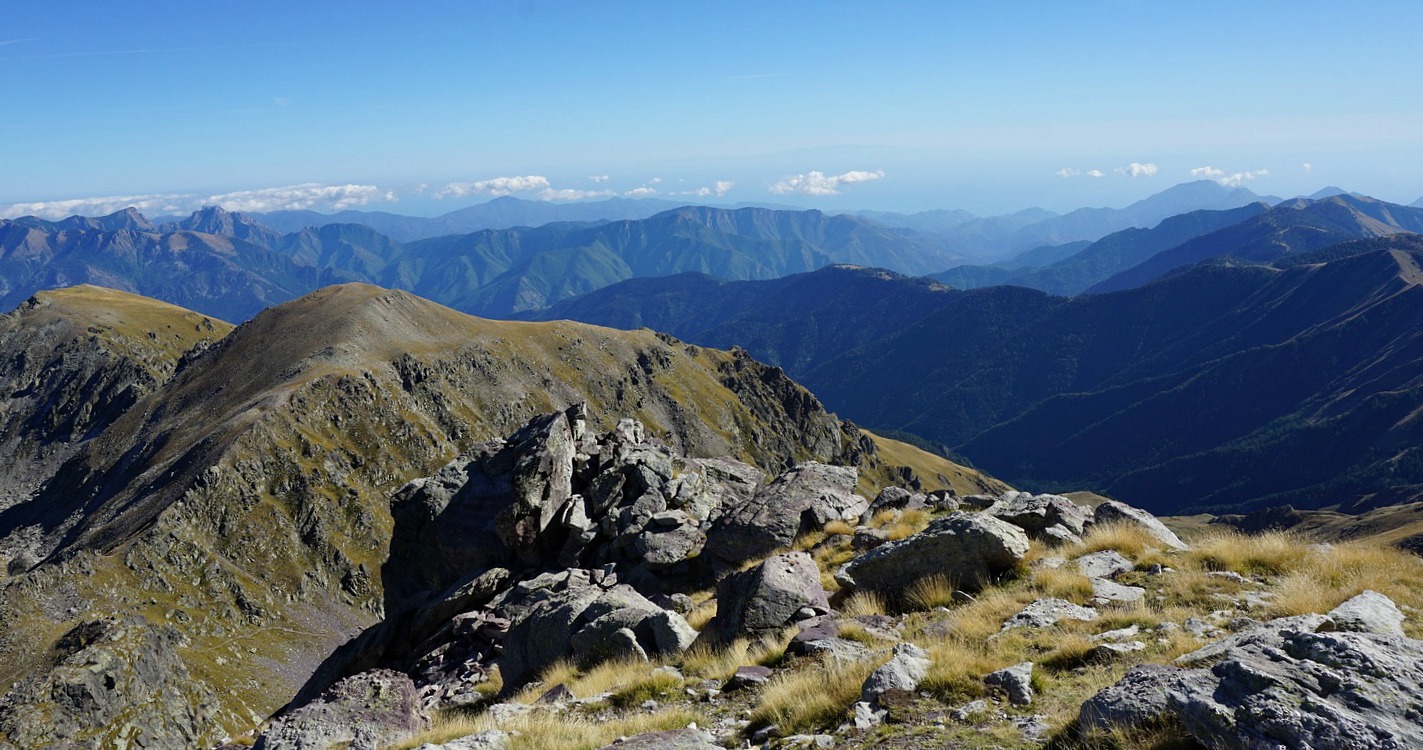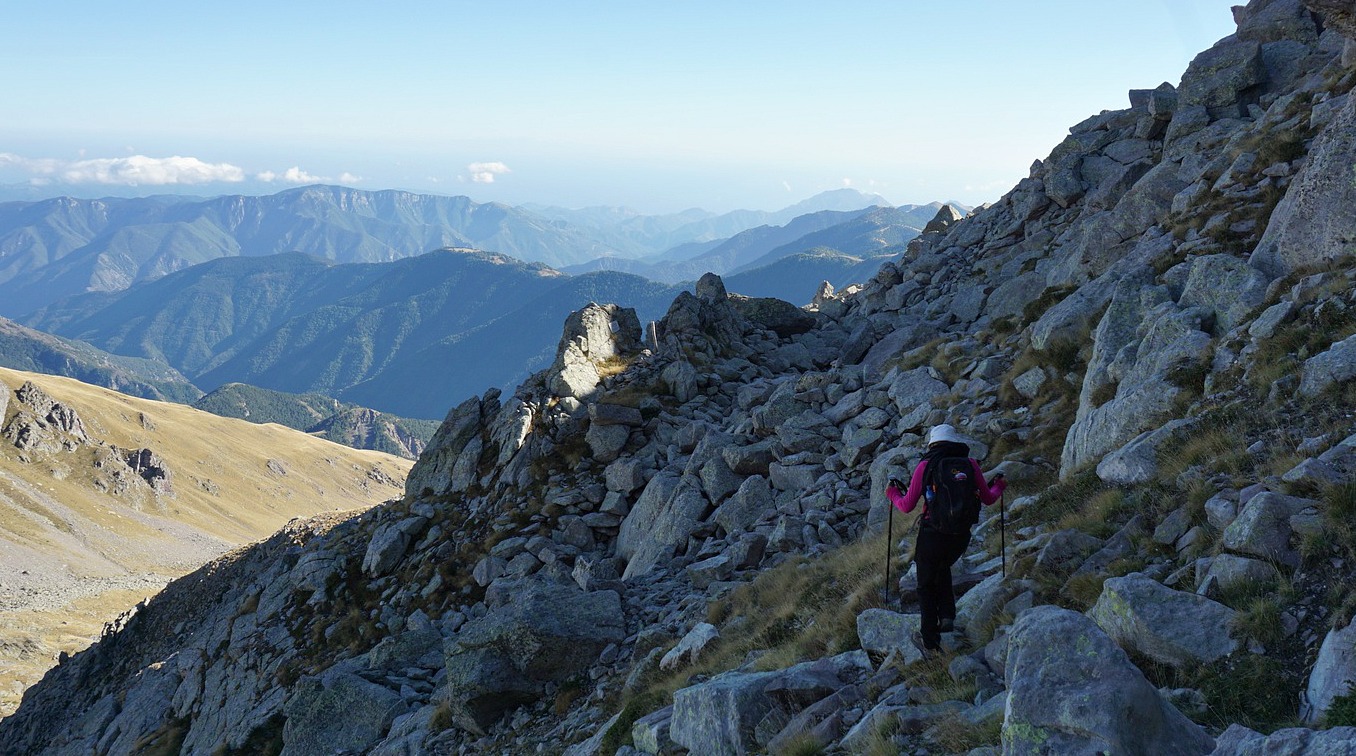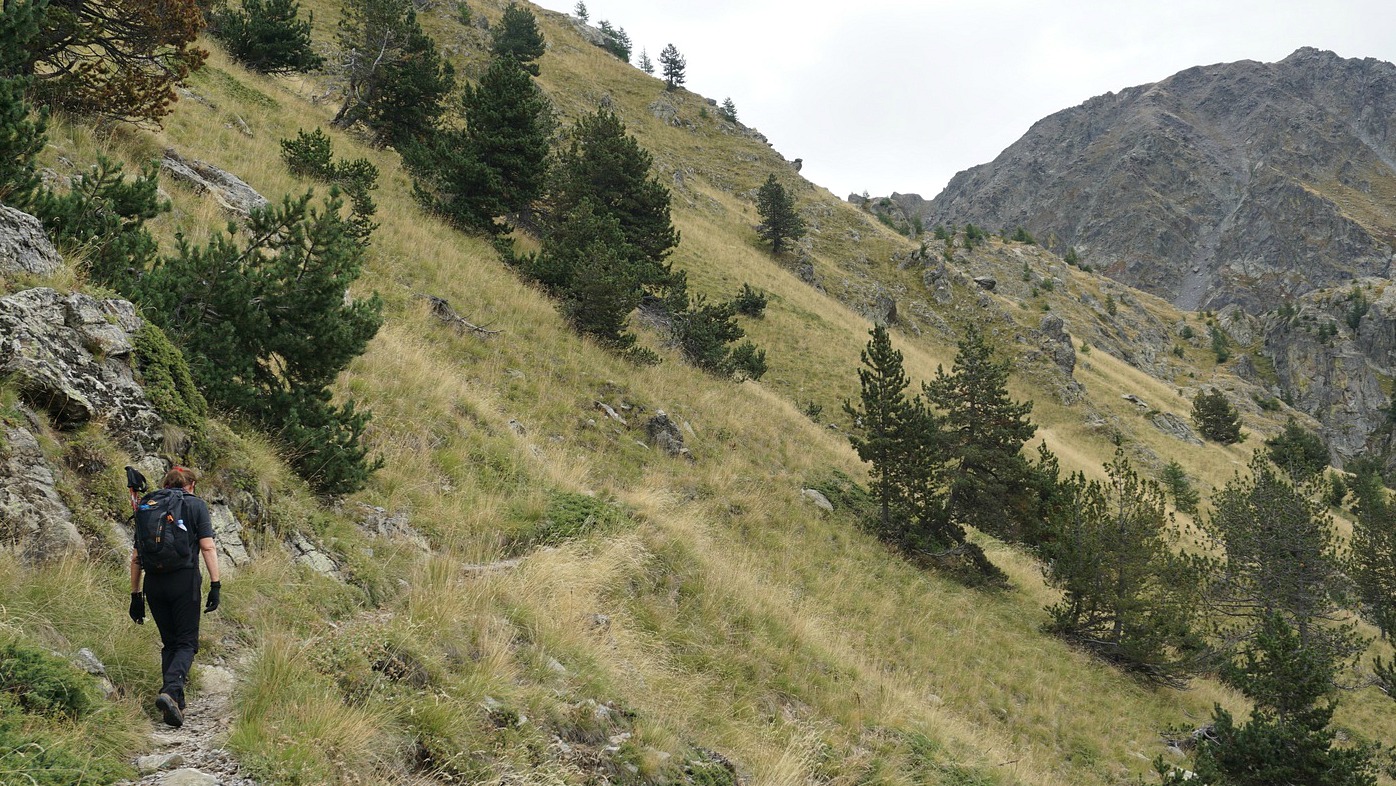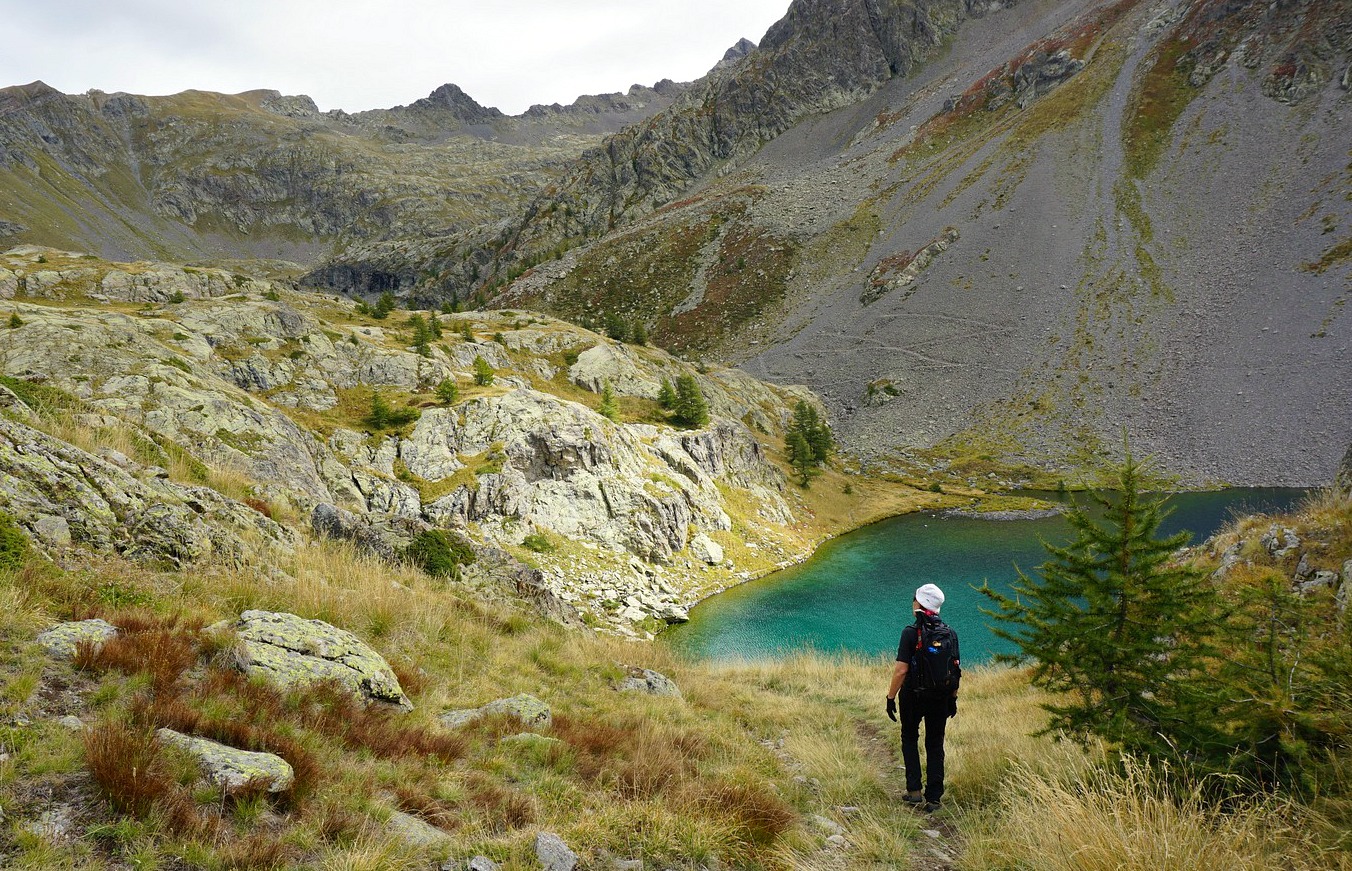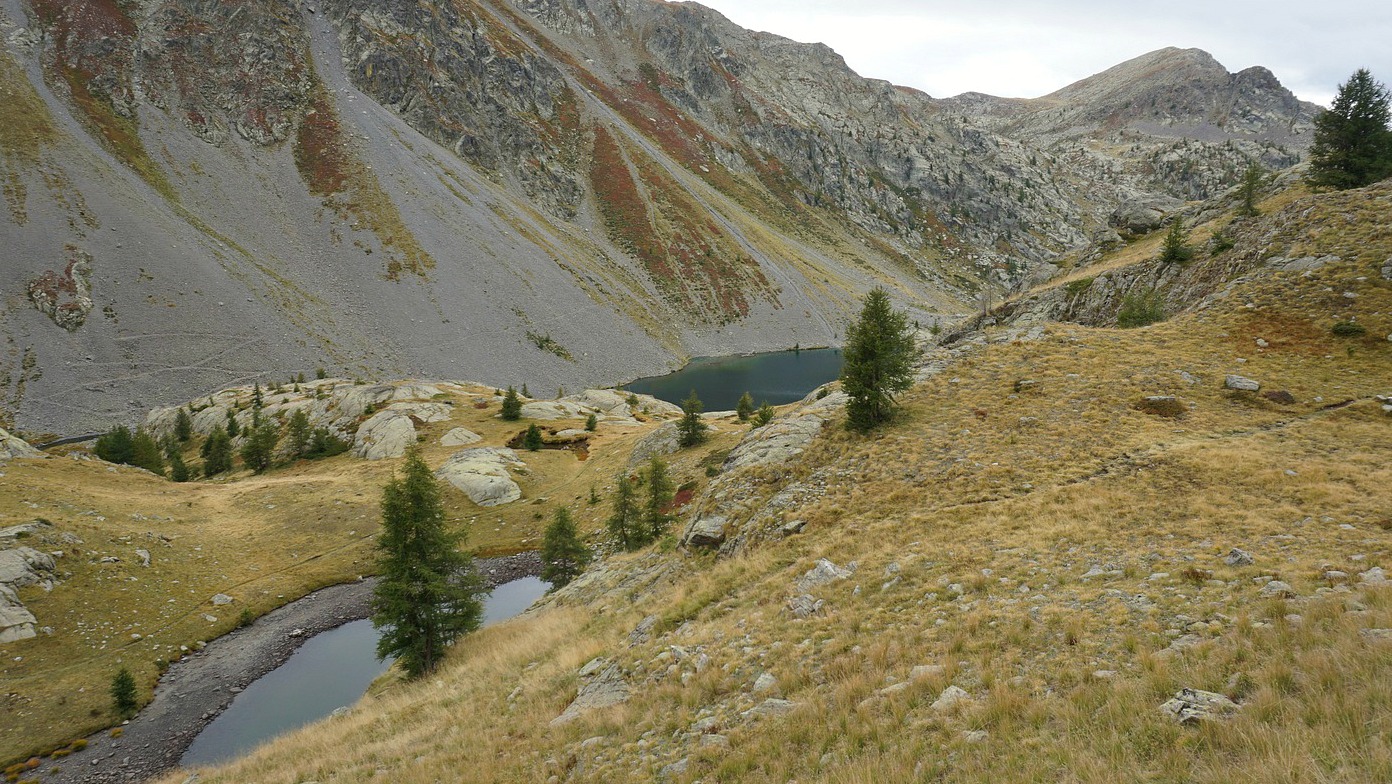
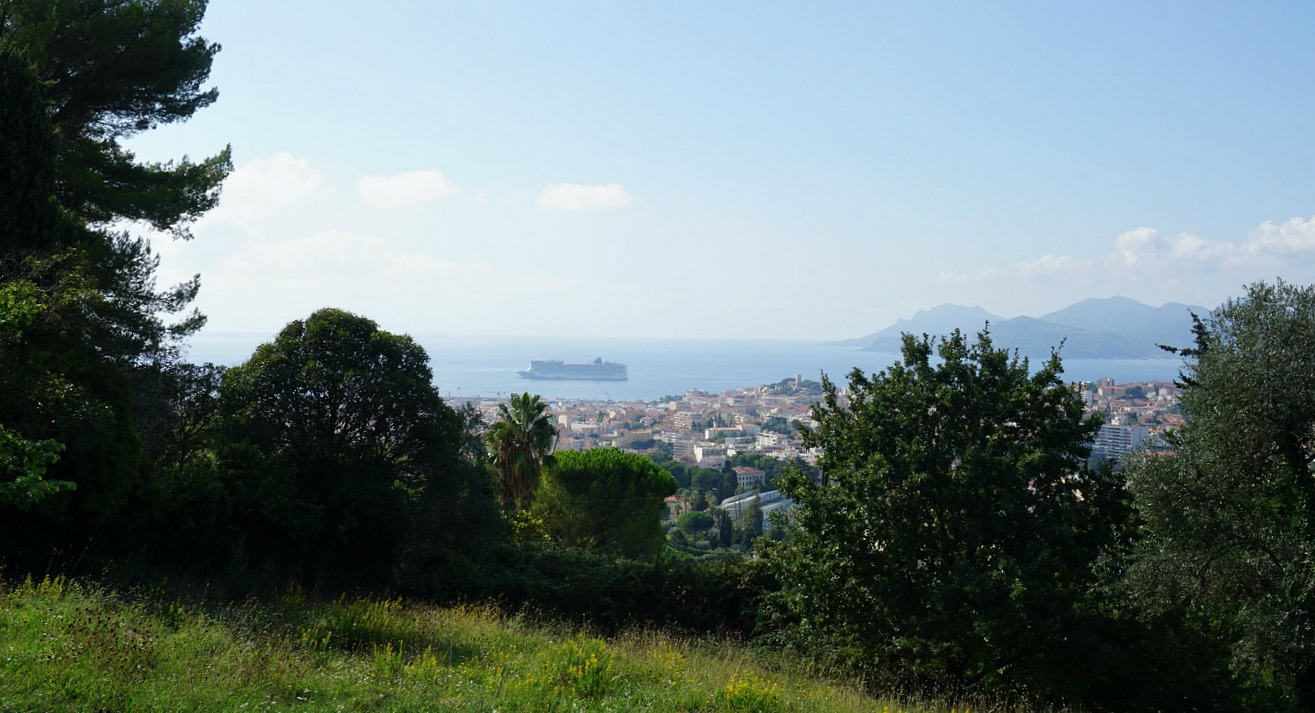
We have previously blogged about the Bonnard Museum in Le Cannet. This time we followed the marked Bonnard trail which starts in the historic part of Le Cannet, above the museum.
In 1926, Bonnard had purchased a house named Villa Du Bosquet on Avenue Victoria. He was inspired by the nature and the scenery down to Cannes and beyond on his walks in the hills above his residence.
We located signpost #601 (Les Collines; Ancien Canal de la Siagne) by Rue St-Antoine, next to the entrance of a parking house and ascended along Traverse Saint-Antoine (stairs). We crossed Route de Serra Capecu/Avenue Victoria (Signpost #602), and continued a bit along Chemin Romain, then forked right along a path that ran in park surrounded by several upscale residences to signpost #603 where we again forked right. In places, we had good views of Le Cannet, the bay of Cannes and the Esterel Mountains. There were yellow markings all along the itinerary.
We descended back along Chemin des Gypiere to Av. Victoria, forked left where one of Bonnard’s paintings was displayed at a nice viewing point. After 40 m or so we forked right, descending to Rue du Canal, then to Avenue Jean Mermoz which we followed as far as to Boulevard Gambetta/Sadi Carnot. From here, we walked back to the starting point nearby.
As before, we had lunch at the terrace by Rue Saint-Sauveur enjoying the warm October sunshine.
Distance: 3 km
Duration: about 1 h
Climb: 80 m


For some time, we have bought almost all our vegetables and fruit from a local organic shop. The fresh produce is from France, Italy, and Spain and you can choose exactly the amount you need and place it in brown paper bags. This method effectively reduces waste and plastic packages.
Recently, I have discovered some delightful grain products in the shop, such as pre-cooked barley bulgur. This grain makes a nice change from quinoa in various vegetable bowls and salads.
2 servings
120 ml pre-cooked barley bulgur
2 carrots
1 parsnip
2 spring onions
3 tsp. capers
Freshly ground black pepper
8 large scallops
Hazelnut or almond powder
Olive oil
Dressing:
Juice of ½ lemon
4 tbsp. olive oil
Cook the barley bulgur covered in double amount of water over low heat for 15 minutes. Let stand covered for 10 minutes, then transfer into a salad bowl and fluff with a fork.
Finely chop the carrots and parsnip and microwave in a small amount of water until soft. Add to the salad bowl.
Wash and finely slice the spring onions. Add to the bowl. Add the capers and black pepper and mix.
Make the dressing by whisking together the lemon juice and olive oil. Add to the salad mixture.
Preheat the oven to 200°C roast. Place the scallops on an oiled oven-proof dish. Place 1 tsp. hazelnut powder and some olive oil over each scallop. Roast for 4- 5 minutes depending on the size of the scallops.
Divide the bulgur- vegetable mixture into two bowls and place the scallops on top. Decorate with some fresh herb.

We have previously made a hike from Courmes (630 m) to Pic de Courmettes (1248 m) where we then climbed via the summit of Puy de Tourrettes (1268 m) back to Courmes.
This time we explored an interesting new trail back from Pic de Courmettes which circled clockwise around the mountain’s southern flank.
We started along the GR51 trail, heading south. Just before a water reservoir, we left the GR51 which turned sharply left. We continued along a wide track to a clearing at 940 m elev. where we forked left at signpost #189 to the summit. We ascended along the western flank of Pic de Courmettes. The trail became steep in places, requiring some easy scrambling. The trail was now easier to see than on our previous ascent. There were yellow markings but apparently more cairns, too. The first part ran in the woods, then above the tree line. The northern face of the mountain not far from the trail is very steep, to be avoided.
The summit is quite near the coastline as the crow flies, and even on a partly cloudy day the scenery towards Antibes, Cannes etc is remarkable.
We continued along a good trail (still yellow markings) descending south east, then straight south. We passed an oak forest and came to a clearing and ruins (named le Jas de l’Eouvière in some maps) at about 900 m elev. with a livestock fence and gate. A good trail continued behind the gate. It was marked with a small red arrow and a fox. In fact, this was one of the hiking itineraries starting from Domaine des Courmettes, owned by a Christian nature conservation association.
We took this trail which crossed the southern flank of the mountain, between the summit and the Domaine. We ascended a bit (80 m or so), and passed an area of centuries-old oak trees. We then descended to a crossroads (dirt track), forked right to the nearby signpost #189 again, completing the nice loop.
From #189, we used the same trail back to our starting point.
The image below shows our track.
Distance: 11 km
Climb: 700 m
Duration: 4 h active
Map: IGN Cannes Grasse Côte d’Azur 3643 ET

This dish makes a nice lunch when fresh sardine fillets are available. Spaghetti is the pasta type which works best with tomato sauce.
2 servings
8- 10 cleaned sardine fillets
Spaghetti for two servings
2 tbsp. olive oil
1 shallot, chopped
1 clove garlic, minced
100 ml good tomato sauce
2 tsp. raisins
A handful of chopped parsley
2 cherry tomatoes, chopped
Freshly ground black pepper
Preheat the oven to 200° C, roast.
Place the sardine fillets in an oven- proof dish and roast for 10 minutes.
In a saucepan, heat the olive oil over medium heat and sauté the shallot, garlic, and raisins for about 5 minutes. Add the tomato sauce and simmer about 5- 10 minutes while roasting the sardine fillets.
At the same time cook the spaghetti according to the advice on the package, usually for 8- 10 minutes.
Drain the pasta and place it back to the casserole. Add the tomato sauce and parsley to the pasta and mix.
Divide the tomato pasta in the centre of two bowls and place the sardine fillets around the pasta. Decorate with chopped cherry tomatoes and grind over some black pepper.

Cime du Diable (2685 m) is a prominent summit in a chain of mountains in the Mercantour National Park, separating the Gordolasque and Roya valleys.
Legend has it that in ancient times the villagers in the Paillon Valley used to believe that devil lived on Cime du Diable, hence its name. When the taxman had visited the villages, they used to say that devil just descended from the mountain.
But there is nothing devilish in the ascent to Cime du Diable; it is a long ascent, but at least you can arrive at the summit along a path, albeit not signposted. Some parts of the trail are steep and exposed but nevertheless negotiable for a seasoned hiker in good weather.
We started from L’Authion above Col de Turini. Starting at 2000 m or so sounds tempting, but keep in mind that this itinerary to Cime du Diable contains several descents, resulting in much more vertical climb.
We parked by the D68 road (2030 m) (one-way counter clockwise traffic), and walked up to nearby signpost #410 (2080 m), next to Pointe des Trois Communes with a ruined fortification. We descended along the GR52 trail, heading north northwest. The October morning was clear, and our summit was well visible but still quite far away. We came to Baisse de St-Véran at 1836 m, marking the lowest point of this hike.
We ascended to Col de Raus (1999 m), then to Baisse Cavaline. After another short descent, the long ascent started, soon in an Alpine environment where the trail (still GR 52) became steeper and rockier.
We reached Pas du Diable (2450 m), then Lacs du Diable ; signposts #404 and #405. We forked left, leaving the GR trail, and climbed to nearby Pas du Trem (2480 m). The summit was now above us. The unmarked (some cairns) trail zigzagged steeply on the eastern face. After the exposed part, the trail levelled off temporarily before the final climb to the summit. At the summit, there were two cairns and a stick, nothing else. As you can see from the images and the short video clip, we chose the right day!
We decided to descend along an unmarked trail (cairns) on the mountain’s southern flank. The trail continued along the eastern flank of the neighbouring Mont Capelet Supérieur (2637 m) where we had to negotiate big boulders in places (last image above). Getting lower, we eventually reached the grassy slopes above Baisse Cavaline, where we re-joined the GR52, and headed back to our starting point.
We met two lamb flocks, dogs and shepherds during the hike. This time the dogs were well trained, obedient and we had no problems in passing them.
Climb: 1170 m
Distance: 17 km
Duration: 7.5 h active
Map: IGN 3741 OT Vallée de la Vésubie
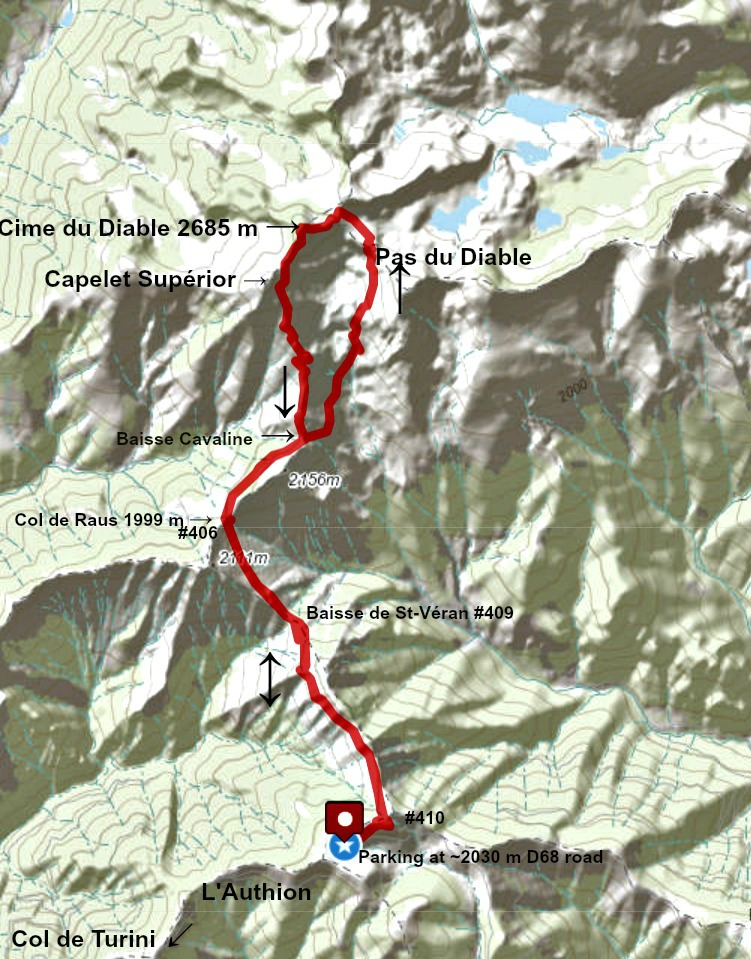

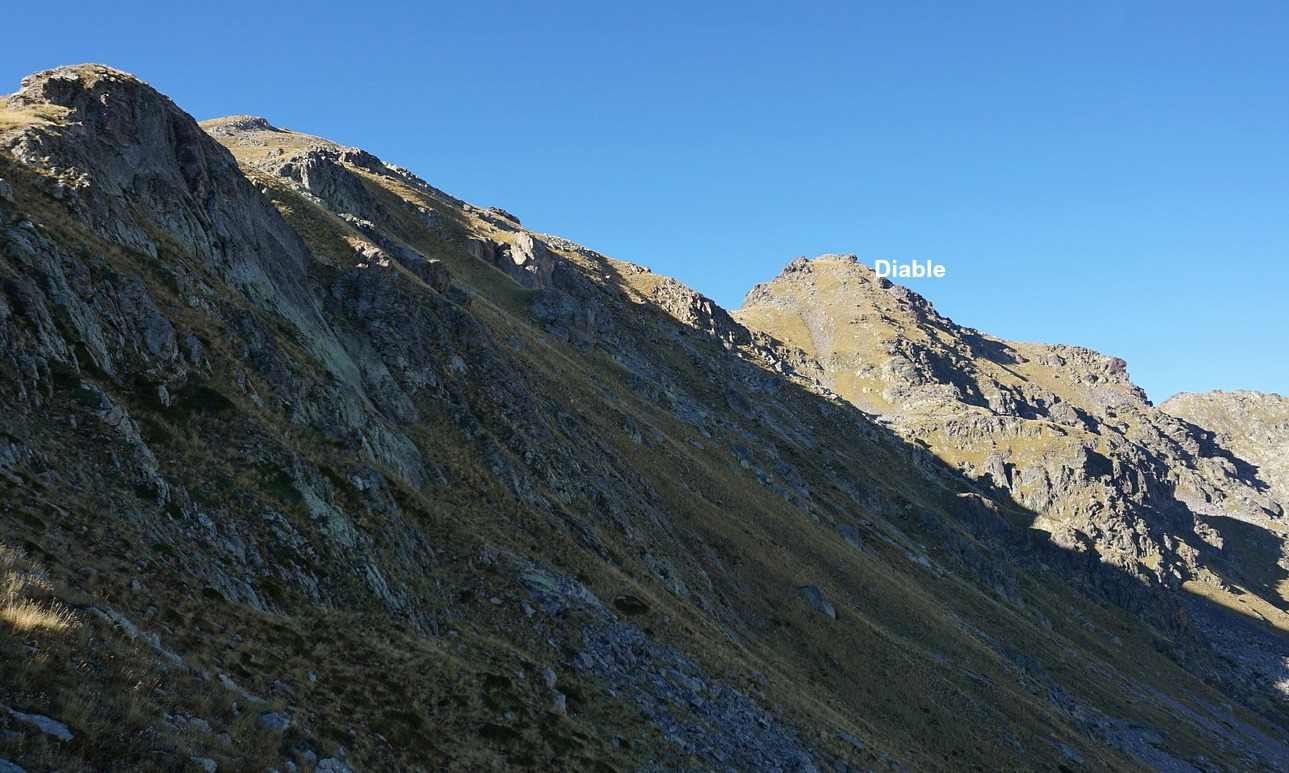
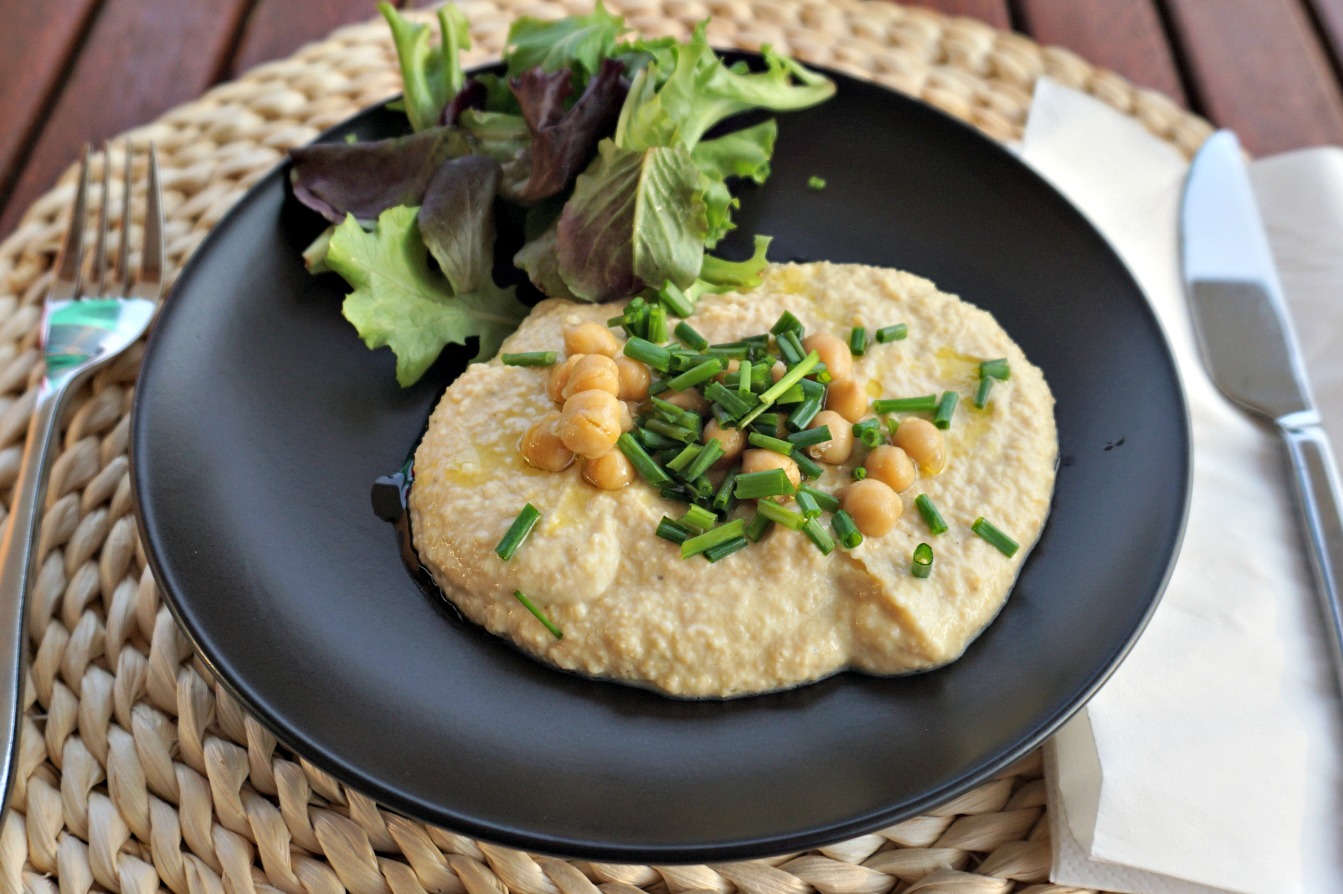
In a small restaurant in Nice, we once had a clever starter: chickpea purée topped with some whole beans, olive oil, and chopped herbs. The restaurant is known for its innovative and gourmet cuisine. This kind of starter is also very healthy; it increases your blood sugar slowly and is good for your heart.
2 servings
A glass jar of 250 g cooked organic chickpeas
½ clove garlic, pressed
4 tbsp. fromage blanc or thick Greek yoghurt
Juice of ½ lemon
Freshly ground black pepper
3 tbsp. olive oil
About 2 tbsp. chopped fresh herbs
Rinse the chickpeas under running water. Save some beans for decoration and place the rest in a food processing bowl. Add the fromage blanc / Greek yoghurt, pressed garlic, lemon juice, black pepper, and 2 tbsp. olive oil.
With a food processor or a handheld mixer, purée the chickpeas into a nice consistence. Divide the purée on two small plates. Add some whole chickpeas on top and sprinkle with 1 tbsp. olive oil. Decorate with fresh herbs.

This must be one of the classic destinations in the Mercantour National Park!
The six (or so) beautiful lakes in the upper Vens Valley can be reached from the Vens parking or Le Pra a bit further away by the D64 road. We chose the first option, which is shorter in distance.
The start is at 1550 m elev. and in spite of a vertical ascent of about 850 m the trail is never too steep or difficult. In fact, during the high season in summer, the parking is often packed with cars as this is the principal itinerary to Refuge de Vens.
We walked first along a dirt track as far as to Torrent de Vens where we crossed the stream along a wooden bridge,passerelle, to signpost #21. We started to ascend following the left bank of the stream. At 1850 m, we crossed the stream again along a very good bridge. The incline of the upper valley became steeper, but for the hiker the zigzagging trail ensured an agreeable ascent.
We reached signpost #22 (2293 m), forked right and climbed to Pas des Pecheurs above one of the lakes. We descended to signpost #27 by the lake, where we found a good spot for our picnic.
Since the weather was deteriorating, we decided to skip the smaller southern lakes, and took the trail that circled along the shores towards Refuge de Vens. Light drizzle started on and off. It was late September and the refuge was now closed. We turned to signpost #24 near the refuge, then climbed to the crossroads and signpost #23 (at 2400 m the highest point of this hike). From here, we continued to signpost #22 and took the same path back to our starting point in the valley. On the way down, a lone chamois crossed the trail just in front of us.
In this magnificent part of Mercantour Park, you can choose several itineraries depending on the time of the year, the weather and your preferences.
Our itinerary is shown below, with relevant signposts marked.
Climb: 900 m
Distance: 15 km
Duration: 5h 10 active
Map: IGN 3639 OT Haute Tinée 1

The following recipe was inspired by a lunch in a small restaurant in Nice. This restaurant cleverly adapts its daily menus of a starter and a main course according to the seasons. I added some winter salad leaves and goat cheese, chevre, to the beetroot tartare to make it a complete, light lunch salad.
2 servings
2 peeled and cooked beetroots, pref. organic
2 tbsp. olive oil
2 tsp. freshly pressed lemon juice
Zest from ½ organic lemon
A handful of crushed hazelnuts
Two handfuls of winter salad leaves, such as rocket or baby red oakleaves
2 tbsp. olive oil vinaigrette
About 8 slices of goat cheese, chevre
1 tbsp. olive oil
Freshly ground black pepper
Chopped parsley or chives to decorate
Chop the beetroots and pace in a bowl. Mix with 2 tsp. olive oil, 2 tsp. lemon juice, zest from ½ lemon, and a handful of crushed hazelnuts. Divide this mixture in the centre of large plates.
Place winter salad leaves around the beetroot. Sprinkle vinaigrette on the leaves and top them with goat cheese slices. Sprinkle 1 tbsp. olive oil on the goat cheese slices and grind over some black pepper. Decorate the beetroot tartare with chopped herbs.
Serve the salad with some good country style bread, preferably rye bread.



























